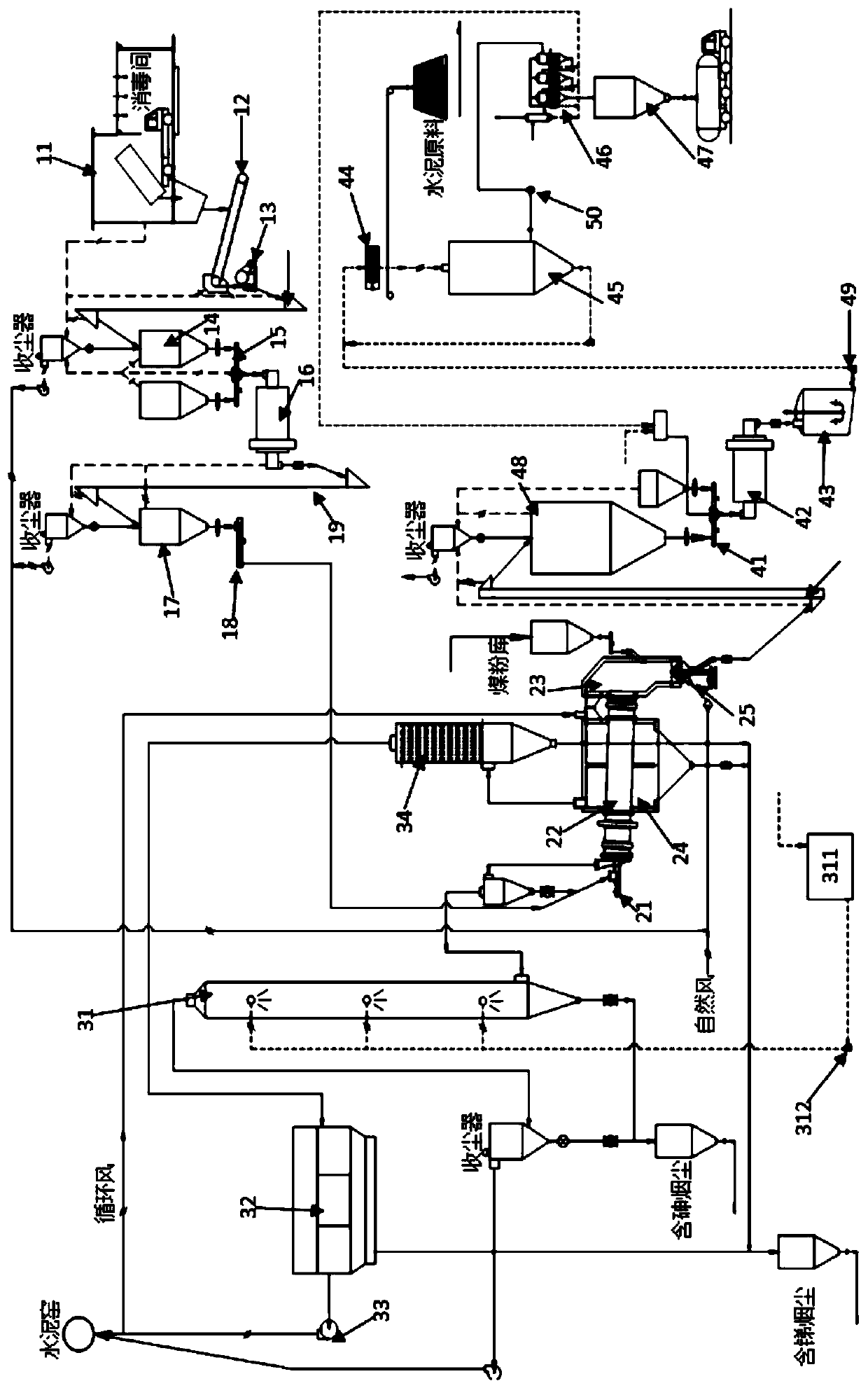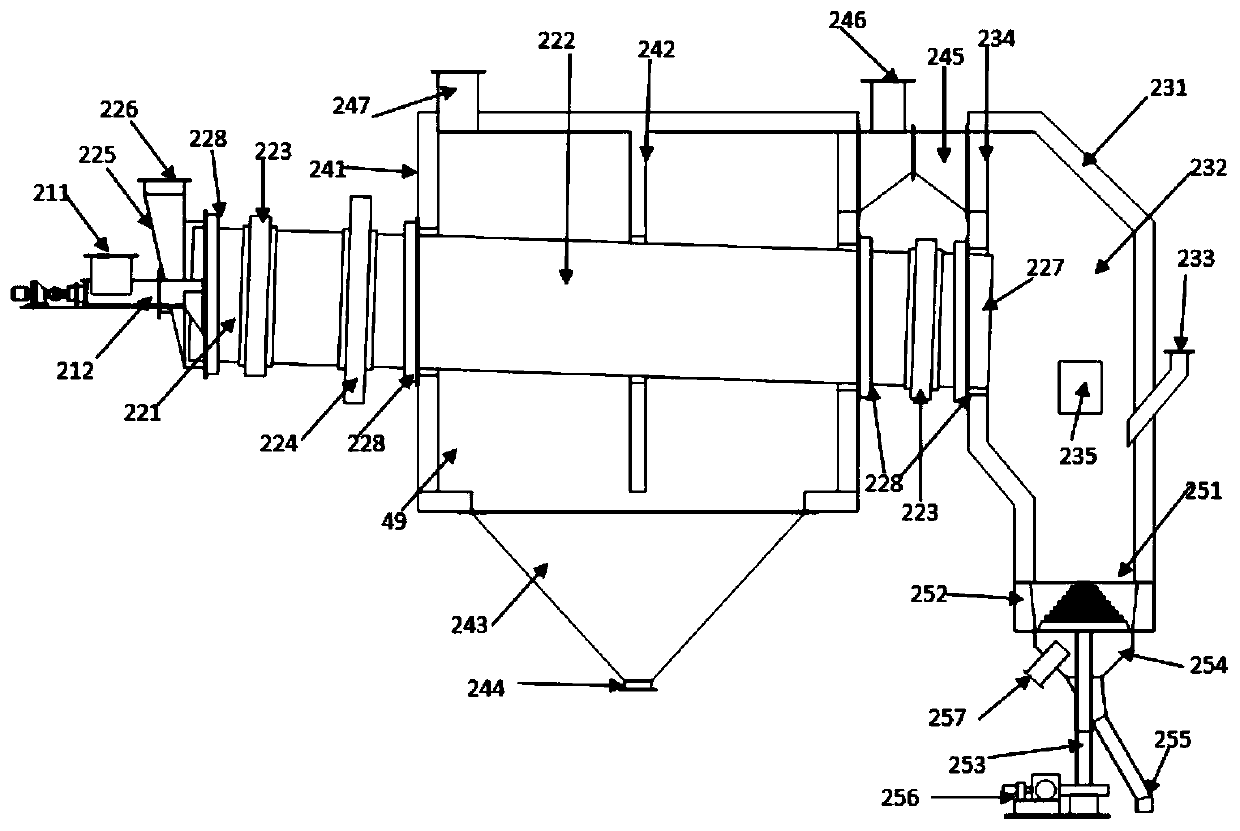Process system and method for cooperatively disposing arsenic alkali residues in recycling manner by cement kiln
A process system and cement kiln technology, applied in the field of arsenic-alkali slag detoxification treatment system, can solve the problems of long treatment process, arsenic residues, increase in waste slag volume, etc., achieve simple and unique equipment structure, save disposal costs, reduce energy. loss effect
- Summary
- Abstract
- Description
- Claims
- Application Information
AI Technical Summary
Problems solved by technology
Method used
Image
Examples
Embodiment Construction
[0058] In order to make the object, technical solution and advantages of the present invention clearer, the present invention will be further described in detail below in conjunction with the accompanying drawings and specific embodiments.
[0059] like Figure 1-3 As shown, the present invention provides a cement kiln resources co-processing system for arsenic-alkali slag, including arsenic-alkali slag crushing system, cement kiln bypass low melting point heavy metal waste slag combined melting furnace incineration system, cement kiln synergistically strengthened flue gas degassing system The arsenic and antimony removal system, the cement early strength agent preparation system and the dealkalization system, the cement kiln bypass low-melting point heavy metal waste slag combined melting furnace incineration system and the arsenic-alkali slag crushing system and the cement kiln respectively cooperate to strengthen flue gas removal The arsenic is connected with the antimony r...
PUM
 Login to View More
Login to View More Abstract
Description
Claims
Application Information
 Login to View More
Login to View More - R&D
- Intellectual Property
- Life Sciences
- Materials
- Tech Scout
- Unparalleled Data Quality
- Higher Quality Content
- 60% Fewer Hallucinations
Browse by: Latest US Patents, China's latest patents, Technical Efficacy Thesaurus, Application Domain, Technology Topic, Popular Technical Reports.
© 2025 PatSnap. All rights reserved.Legal|Privacy policy|Modern Slavery Act Transparency Statement|Sitemap|About US| Contact US: help@patsnap.com



